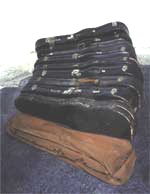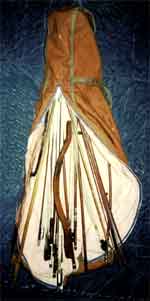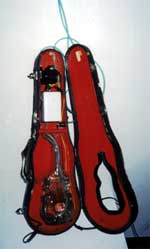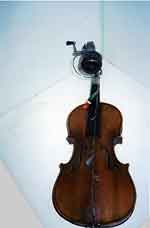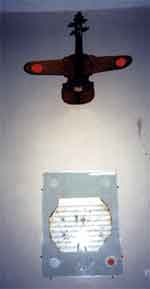 | |||||||

|
The String Quartets Based on Jazz Standards |
|
The relationship between the violin and jazz has rarely been either interesting or musically compelling. Joe Venuti showed that technique mattered and Stuff Smith demonstrated how to dig the bow in till it hurt. Both offered some melodic invention. There are other examples, including the extraordinary Elek Bacsik, but really you can count significant jazz violinists on one hand. In 1958 along came Harry Lookofsky with the definitive violin bebop album. It was called 'Stringsville' and it set the bar very high for anybody trying to follow. That album gave me many sleepless nights when I first heard it in the 1970's--how could anybody play the violin that good on jazz standards? Later, I discovered that, although the music went at full tilt, sounded loose, and swung like crazy, all the violin lines were written. Harry was a classical violinist (actually leader of the NBC orchestra), loved jazz, and wanted to bring his abilities to that music. Arguments continue to this day about 'is this legitimate jazz?' or even 'should it be allowed?' Dumping that nonsense where it should be put, 'Stringsville' is an awesome achievement by any standards (eh--sorry) and a landmark in violin history. Wind the clock forward a decade and we find another classically-trained violinist with a superb technique setting herself the challenge of bringing her musicality and skills (not to mention perfect pitch) to the service of American vernacular music--or non-classical violin music. Hollis Taylor has spent much of the last 25 years researching, arranging, and writing about the various fiddle traditions which are so rich and dynamic throughout the States. Part of her work has dealt with the problems of how to play jazz on the violin. Let's be more succinct. How to play lines that move across the beat, how to put 'time' into the bow stroke, how NOT to use the incontinent vibrato of the standard Juilliard training (but use it as decoration similar to the baroque aesthetic), how to phrase a bop line and be hard and precise (the opposite of a Grappelli phrase, for example). Much of Ms. Taylor's investigation into the practice (then the theory please) of 'bowed jazz' has made her a sought-after teacher for both amateur and professional violinists wishing to explore the 'other' violin music. When I was informed that she planned to put a string quartet together of classical players playing jazz as repertoire, I jumped at the chance of arranging some 'classic' jazz standards for the project. "Morphology" is based on "Ornithology," the tune by Charlie Parker. I wasn't so interested in the harmonic foundation of the piece, based as it was on the standard "How High the Moon," but more in the melodic line itself. I put the thematic material through a series of rhythmic displacements allowing the odd accident to happen from time to time. The piece seemed to make it itself. A few months after it was finished, I looked at it again. Sure enough, it needed a few more accidents. "All The Things You Are" is a sort of 'passing out parade' piece for would be beboppers; it contains a great set of changes. The first movement is solo and contains the tune and changes in plain vanilla flavor, although playing the harmony and the tune, on what is basically a monophonic instrument, is no piece of cake. The sound of the movement harks back to the great Bach unaccompanied sonatas. "All the Notes" is exactly that with a solo over the basic harmonic structure followed by all the notes of the tune piling up on each other to create other harmonic possibilities. "All the Notes 2" is similar except there is a three-part counterpoint running down the changes instead of a solo. Counterpoint was the great characteristic of Dixieland and trad jazz which sadly disappeared (unnecessarily in my view) in bebop, although here the counterpoint relates more to a Bach chorale prelude from Leipzig than a stomp from New Orleans. "All the Gavins" refers to the composer Gavin Bryars whose minimal string writing inspired this movement. A few fragments of the melody are isolated in their retrograde and inverted forms and then placed in a time warp. "All the Retros" deals with the tune backwards, and I've inserted a few stalled moments when the busy traffic gets stuck at the lights. (In these compositions I'm attempting to hear each of these standards from a radically different position. For example, I've made a version of Coltrane's "Giant Steps" as a country "hoe down" complete with a tough, fast changing, banjo part -- the finguring and neck positions being worked out with the aid of an algorithm. Altogether there are some 6 quartet standards planned.) "All the Keys" is just that and while this movement goes through them, bits of the tune disappear till all we are left with at the end is all the gaps. "All the Tremolos" is a slow moving block of sound with all the possibilities of melodic transformation that I used in the rest of the piece combined in four even parts. The bowing arm IS supposed to feel fatigued at the end of this. "Noch Nicht Alles." Just when you thought it was safe to leave your seat and were already half way standing up with thoughts of the end and a glass of good red wine approaching your lips -- there is still another movement to come. But you'll be relieved to hear that it is short and concise, a recapitulation that clears the way for Ms. Taylor's coda "All The Rest". This is a real tour de force of a counterpoint fantasy containing quotes from just about all the definitive solos that one can remember, a kind of "All The Things You Were". Notes from Hollis Taylor: When Mr. Rose presented me with his take on "All the Things You Are," I was astonished at the scope of his diverse permutations. I got to thinking of how previous greats covered this standard and decided to add a coda, combining snippets from the solos I had transcribed over the years, from Ella with Duke, Woody Shaw, Coleman Hawkins, Joe Pass, Bird, Jimmy Heath, Sonny Rollins, Miles, Claude Williams, Chet Baker, Hank Jones, Stan Getz, Denny Zeitlin, Mingus, and others, then I added my own as well. Most of the movement runs in four-part counterpoint. You might think of some of this evening's music as the jazz that never was. The Personal: Hollis Taylor, violin; Julie Coleman, violin; Joel Belgique, viola; Nancy Ives, cello. The concert: American Violinist Hollis Taylor will present a lively evening of jazz-influenced works, ranging from solo violin to string quartet, on Saturday, Sept. 28, 2002, at 8 p.m., in Agnes Flanagan Chapel, Lewis & Clark College, 0615 S.W. Palatine Hill Rd. www.hollistaylor.com www.jonroseweb.com |
 |
